The embroidery machine market is flourishing, fueled by the rising demand for personalized textiles and innovative apparel designs. Valued at USD 2.10 billion in 2024, this market is projected to grow at a CAGR of 4.30%, reaching USD 2.71 billion by 2030. This article explores leading manufacturers, growth drivers, regional insights, and key considerations to help buyers make informed decisions in this evolving industry.
Table of Contents:
Understanding the Embroidery Machine Market
Types of Embroidery Machines
Key Features to Look for in an Embroidery Machine
Evaluating Machine Durability and Warranty
Budget Considerations and Financing Options
Current Trends in Embroidery Machines
Making the Final Decision
Understanding the Embroidery Machine Market
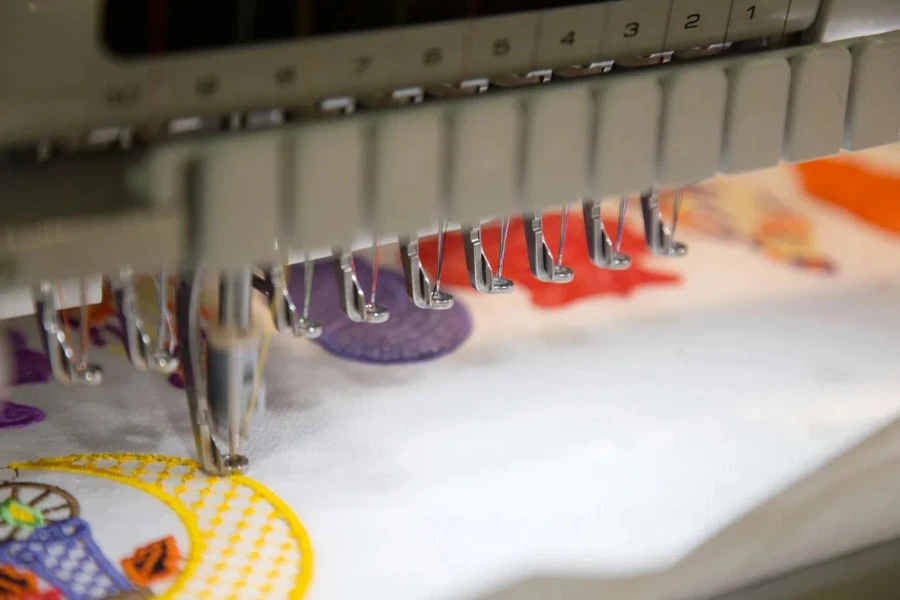
Introduction
As of 2024, the global embroidery machine market has shown remarkable growth, reaching a valuation of USD 2.10 billion, up from USD 2.02 billion in 2023. This growth is driven by the increasing demand for personalized and custom-designed apparel and textiles. The market is expected to continue its upward trajectory, with a projected CAGR of 4.30%, reaching USD 2.71 billion by 2030. This article delves into the key aspects of the embroidery machine market, providing insights into market players, demand forecasts, and regional trends.
Key Market Players
The embroidery machine market is dominated by several key players who drive innovation and market trends. Companies such as Brother Industries, Ltd., Bernina International AG, and Tajima Industries Ltd. are at the forefront, offering advanced embroidery solutions. Brother Industries, Ltd. recently launched a new embroidery machine tailored for start-up businesses, enhancing creativity and efficiency in textile projects. Similarly, HSW unveiled its revolutionary 5G embroidery machines, setting new industry standards with enhanced performance and speed. These companies continuously invest in R&D to introduce features like user-friendly interfaces, advanced networking capabilities, and higher efficiency, catering to both small businesses and large-scale manufacturers.
Market Demand and Growth Forecasts
The embroidery machine market is expected to grow significantly, driven by the rising demand for personalized apparel and textiles. In 2024, the market was valued at USD 2.10 billion, with projections indicating a growth to USD 2.71 billion by 2030, at a CAGR of 4.30%. This growth is fueled by the increasing popularity of custom-designed clothing for everyday wear, corporate branding, and event merchandise. Additionally, government policies supporting the textile industry and advancements in automated embroidery machines contribute to market expansion. Automated machines, which offer precise and consistent quality, are particularly in demand for large-scale manufacturing and customization.
Regional Market Insights
The embroidery machine market exhibits varied growth patterns across different regions. In the Americas, the market is driven by consumer demands in fashion and customization, with hobbyists and small businesses adopting embroidery machines for personalized products. The Asia-Pacific region, led by countries like China, India, and Japan, is experiencing rapid growth due to the burgeoning textile industry and local demand for intricate designs. In Europe, the market is characterized by a high demand for sophisticated machines that offer extensive customization and high efficiency. The Middle East and Africa are also witnessing growth, driven by the increasing interest in garment decoration and the expansion of small and medium enterprises focusing on fashion and interior decor.
Types of Embroidery Machines
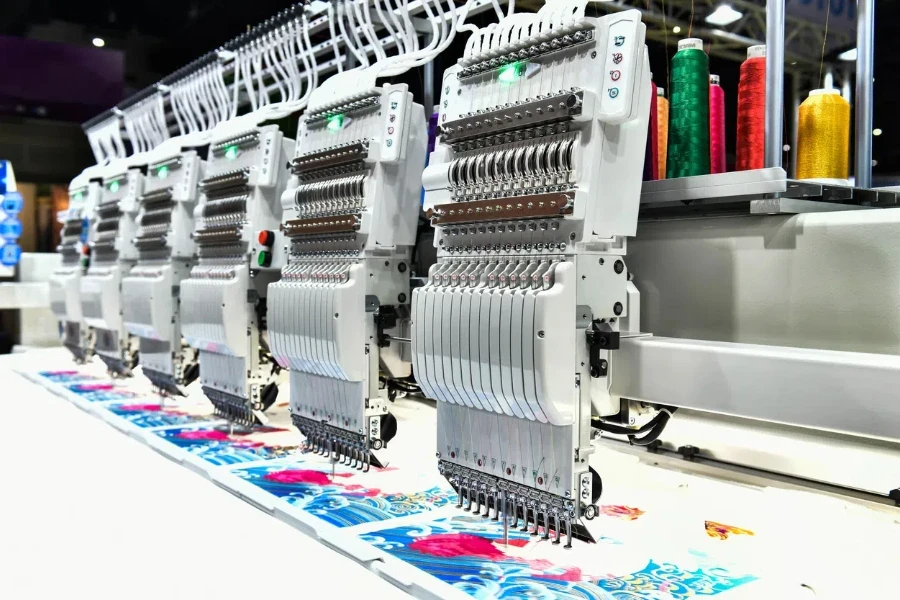
Single-Head vs. Multi-Head Machines
Embroidery machines are categorized into single-head and multi-head machines, each serving different market needs. Single-head machines are typically used by hobbyists and small businesses for custom and small-batch production. These machines are compact, easy to use, and ideal for intricate designs. On the other hand, multi-head machines are designed for industrial use, enabling high-volume production with multiple needles working simultaneously. These machines significantly enhance productivity and efficiency, making them suitable for large-scale manufacturers. The increasing use of multi-head embroidery machines is a key trend, driven by the need to meet high production demands while maintaining quality.
Computerized vs. Manual Machines
The market for embroidery machines is also segmented by technology, with computerized and manual machines catering to different user preferences. Computerized embroidery machines dominate the market due to their advanced features, such as digital design setup, precise stitching, and automation. These machines allow users to create complex designs with minimal manual intervention, making them ideal for both commercial and industrial applications. Manual machines, while less prevalent, are still used in regions where traditional embroidery techniques are valued. These machines require skilled operators and are often used for custom, artisanal work. The trend towards automation and digitalization is expected to continue, with computerized machines gaining further market share.
Specialized Embroidery Machines
Specialized embroidery machines cater to niche markets and specific applications. These include machines designed for cap embroidery, 3D puff embroidery, and sequin embroidery. Cap embroidery machines are equipped with specialized hoops and frames to handle the curved surfaces of caps, making them popular among sports teams and promotional product manufacturers. 3D puff embroidery machines create raised designs by stitching over foam, adding a tactile dimension to the embroidery. Sequin embroidery machines, on the other hand, are used to attach sequins to fabric, creating decorative and eye-catching designs. The demand for these specialized machines is driven by the need for unique and customized embroidery solutions in various industries.
Key Features to Look for in an Embroidery Machine
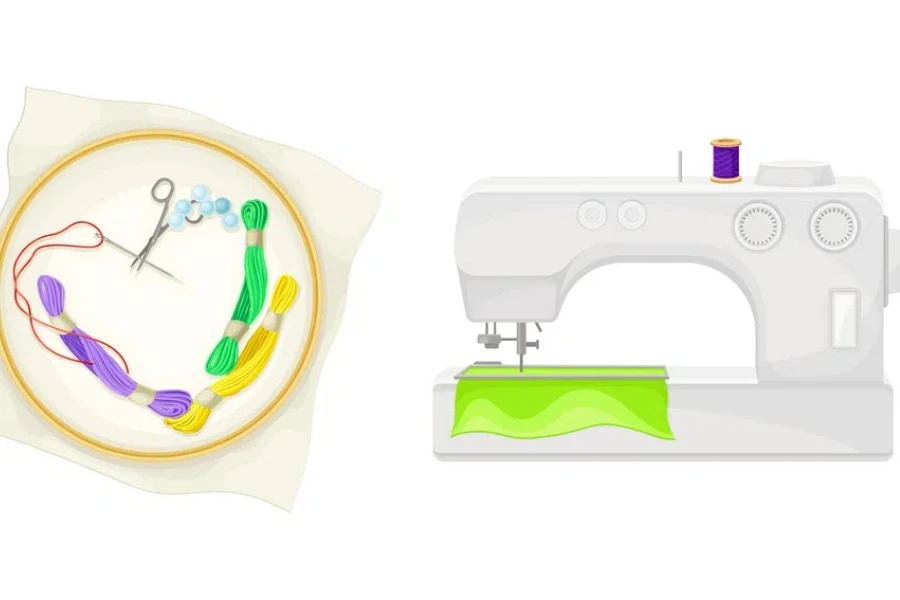
Stitch Speed and Quality
When selecting an embroidery machine, stitch speed and quality are critical factors to consider. High-speed machines, capable of stitching up to 1,200 stitches per minute, are essential for industrial applications where time efficiency is crucial. However, speed should not compromise stitch quality. Advanced machines offer consistent stitch quality even at high speeds, ensuring precise and intricate designs. Features such as automatic thread tension adjustment and high-resolution digital controls contribute to maintaining stitch quality. Buyers should prioritize machines that balance speed and quality to meet their production needs effectively.
Hoop Sizes and Compatibility
Hoop size and compatibility are important considerations for embroidery machine buyers. Different projects require different hoop sizes, and having a machine that supports a variety of hoop sizes enhances versatility. Industrial machines often come with multiple hoop options, ranging from small hoops for detailed work to large hoops for extensive designs. Compatibility with various hoop types, such as magnetic hoops and cap frames, is also crucial. Machines that offer easy hoop changes and secure hooping mechanisms improve workflow efficiency and reduce downtime. Buyers should assess their project requirements and choose machines that offer the necessary hoop sizes and compatibility.
Built-in Designs and Software Integration
Modern embroidery machines come with built-in designs and software integration features that enhance creativity and productivity. Built-in designs provide users with a library of ready-to-use patterns, saving time and effort in design creation. Advanced machines also support software integration, allowing users to import custom designs and edit them using embroidery software. Features such as USB connectivity, Wi-Fi, and cloud storage enable seamless design transfer and storage. Software integration also facilitates design customization, resizing, and color adjustments, providing users with greater flexibility. Buyers should look for machines with robust built-in design libraries and software integration capabilities to maximize their creative potential.
Ease of Use and Maintenance
Ease of use and maintenance are essential factors for both novice and experienced users. User-friendly interfaces, intuitive controls, and clear instructions make it easier for users to operate the machine and achieve desired results. Features such as automatic needle threading, thread cutting, and error alerts simplify the embroidery process and reduce the learning curve. Maintenance is another critical aspect, as regular upkeep ensures the machine’s longevity and performance. Machines with easy access to components, clear maintenance guidelines, and available customer support are preferable. Buyers should prioritize machines that offer ease of use and low maintenance requirements to ensure a smooth and efficient embroidery experience.
Evaluating Machine Durability and Warranty
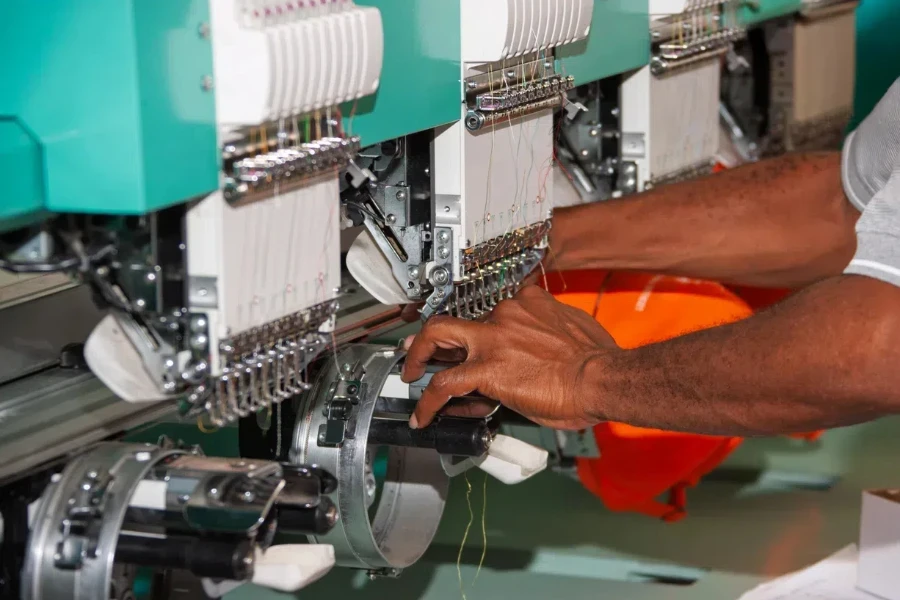
Material and Build Quality
The material and build quality of machinery are critical factors in determining its durability. High-quality materials such as stainless steel, cast iron, and hardened alloys are commonly used in the construction of durable machines. For instance, broaching machines often utilize high-carbon, high-chrome tool steels for their cutting tools, ensuring longevity and resistance to wear. Additionally, the build quality, including the precision of assembly and the robustness of components, significantly impacts the machine’s operational lifespan.
Advanced manufacturing techniques, such as CNC machining and laser cutting, contribute to the superior build quality of modern machinery. These techniques allow for precise tolerances and consistent production quality, which are essential for maintaining the integrity of the machine over time. For example, CNC milling machines are known for their high precision and repeatability, which are achieved through meticulous manufacturing processes. The use of advanced coatings and surface treatments, such as nitriding and chrome plating, further enhances the durability of machine components by providing additional protection against corrosion and wear.
Regular maintenance and proper usage also play a vital role in preserving the material and build quality of machinery. Implementing a preventive maintenance schedule can help identify potential issues before they lead to significant damage. For instance, regularly inspecting and replacing worn-out parts in extrusion machines can prevent breakdowns and extend the machine’s service life. Ensuring that operators are trained to use the machinery correctly can also minimize the risk of damage due to improper handling.
Warranty Terms and Conditions
Warranty terms and conditions are essential considerations when evaluating the purchase of machinery. A comprehensive warranty can provide peace of mind and financial protection against unexpected repairs and replacements. Typically, warranties cover defects in materials and workmanship for a specified period, which can range from one to several years. For example, many manufacturers of packaging machines offer warranties that cover parts and labor for up to two years.
It is crucial to thoroughly review the warranty terms to understand what is included and any limitations or exclusions. Some warranties may only cover specific components or require regular maintenance to remain valid. For instance, a warranty for a molding machine might stipulate that the machine must be serviced by authorized technicians at regular intervals. Additionally, warranties may exclude coverage for damage caused by misuse, neglect, or unauthorized modifications.
Extended warranties and service contracts are also available from many manufacturers and third-party providers. These options can offer additional coverage beyond the standard warranty period, providing further protection against costly repairs. For example, an extended warranty for a CNC machining center might include annual inspections and priority access to technical support. When considering an extended warranty, it is essential to evaluate the cost versus the potential benefits and the likelihood of needing significant repairs during the extended period.
Budget Considerations and Financing Options
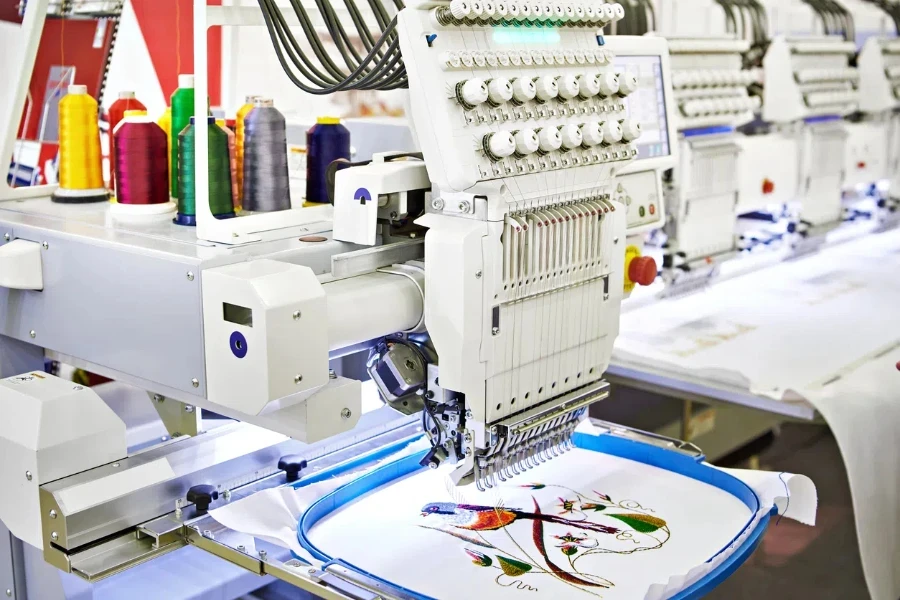
Price Range for Different Types of Machines
The price range for machinery varies significantly depending on the type, size, and complexity of the equipment. For instance, basic manual milling machines can cost as little as $5,000, while advanced CNC machining centers can exceed $100,000. Similarly, the cost of extrusion machines can range from $10,000 for small, simple models to over $500,000 for large, high-capacity systems. Understanding the price range for different types of machines is crucial for budgeting and financial planning.
Factors such as brand reputation, technological features, and customization options also influence the price of machinery. High-end brands with a reputation for quality and reliability often command higher prices. For example, a top-tier laser engraving machine with advanced features like automated material handling and high-speed processing can cost significantly more than a basic model. Customization options, such as specialized tooling or enhanced automation capabilities, can further increase the cost of the equipment.
It is essential to consider the total cost of ownership (TCO) when evaluating the price of machinery. TCO includes not only the initial purchase price but also ongoing expenses such as maintenance, repairs, and energy consumption. For example, a high-efficiency molding machine may have a higher upfront cost but lower operating expenses over its lifetime. By considering TCO, buyers can make more informed decisions and select machinery that offers the best value for their investment.
Leasing vs. Buying
Leasing and buying are two common financing options for acquiring machinery, each with its advantages and disadvantages. Leasing allows businesses to use the equipment without the need for a large upfront investment. This can be particularly beneficial for companies with limited capital or those looking to preserve cash flow. Lease agreements typically include maintenance and support services, reducing the burden of upkeep. For example, a company might lease a high-end CNC milling machine for a fixed monthly fee, which includes regular maintenance and technical support.
However, leasing also has its drawbacks. Over the long term, leasing can be more expensive than buying due to the cumulative cost of lease payments. Additionally, at the end of the lease term, the business does not own the equipment and may need to negotiate a new lease or purchase the machinery at its residual value. This can be a disadvantage for companies that plan to use the equipment for many years. For instance, a business that leases a packaging machine for five years may end up paying more than the purchase price without gaining ownership.
Buying machinery outright offers the advantage of ownership, allowing businesses to build equity in their equipment. This can be a more cost-effective option in the long run, especially for machinery with a long service life. Ownership also provides the flexibility to modify or upgrade the equipment as needed. However, buying requires a significant upfront investment, which can strain cash flow. Financing options such as loans or equipment financing can help mitigate this burden by spreading the cost over time. For example, a company might finance the purchase of an extrusion machine with a five-year loan, making monthly payments while gaining immediate ownership.
Potential ROI and Cost-Benefit Analysis
Evaluating the potential return on investment (ROI) and conducting a cost-benefit analysis are essential steps in the decision-making process for acquiring machinery. ROI measures the profitability of the investment by comparing the expected gains to the initial cost. For example, if a new broaching machine increases production efficiency and generates an additional $50,000 in annual revenue, and the machine costs $200,000, the ROI would be 25% per year.
A cost-benefit analysis involves comparing the total costs of the investment, including purchase price, maintenance, and operating expenses, to the anticipated benefits, such as increased productivity, reduced labor costs, and improved product quality. For instance, a company considering the purchase of a high-efficiency molding machine might analyze the cost savings from reduced energy consumption and lower maintenance requirements. If the benefits outweigh the costs, the investment is deemed worthwhile.
It is also important to consider intangible benefits, such as improved employee morale and customer satisfaction, which can indirectly contribute to the ROI. For example, investing in advanced packaging machines with automated features can reduce the physical strain on workers, leading to higher job satisfaction and lower turnover rates. Additionally, higher-quality packaging can enhance the customer experience and boost brand reputation. By conducting a thorough cost-benefit analysis, businesses can make informed decisions that align with their financial goals and operational needs.
Current Trends in Embroidery Machines
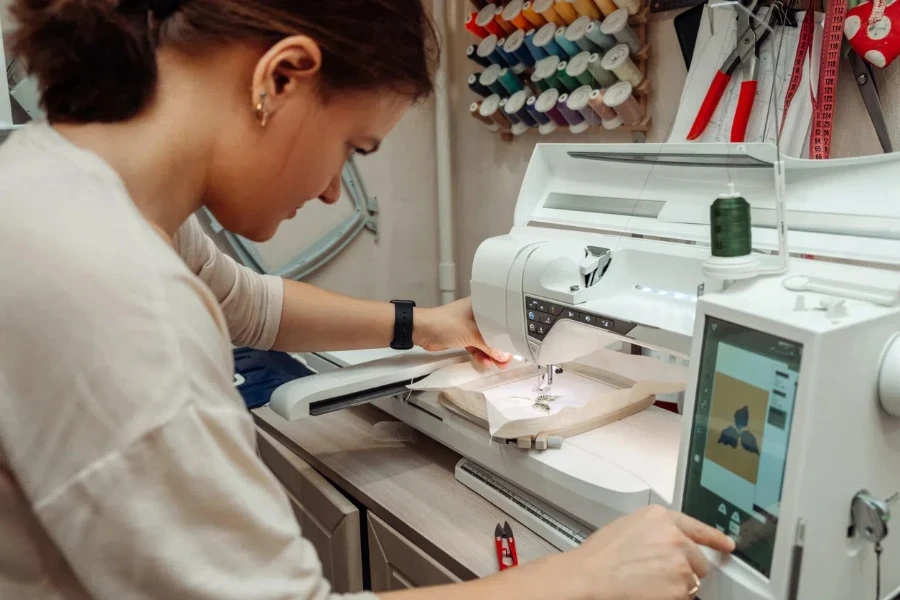
Technological Innovations
Technological innovations are driving significant advancements in embroidery machines, enhancing their capabilities and efficiency. One notable trend is the integration of computer-aided design (CAD) and computer-aided manufacturing (CAM) software, which allows for precise and intricate embroidery patterns. For example, modern embroidery machines can read digital files and automatically adjust stitching parameters to create complex designs with high accuracy. This technology reduces the need for manual adjustments and increases production speed.
Another innovation is the development of multi-needle embroidery machines, which can simultaneously use multiple threads to create multi-colored designs. These machines are equipped with advanced threading systems and automatic color-changing capabilities, allowing for seamless transitions between different thread colors. For instance, a multi-needle embroidery machine can produce a detailed logo with multiple colors in a single run, significantly reducing production time and labor costs. Additionally, these machines often feature high-speed stitching capabilities, further enhancing productivity.
The incorporation of IoT (Internet of Things) technology is also transforming the embroidery industry. IoT-enabled embroidery machines can connect to the internet and communicate with other devices, enabling remote monitoring and control. For example, operators can use a smartphone app to monitor the machine’s status, receive alerts for maintenance needs, and adjust settings from anywhere. This connectivity enhances operational efficiency and allows for proactive maintenance, reducing downtime and extending the machine’s lifespan.
Eco-Friendly and Sustainable Practices
Eco-friendly and sustainable practices are becoming increasingly important in the embroidery industry, driven by growing environmental awareness and regulatory requirements. One trend is the use of energy-efficient embroidery machines that consume less power and reduce greenhouse gas emissions. For example, modern embroidery machines are designed with energy-saving features such as LED lighting and efficient motors, which can significantly lower energy consumption compared to older models. These machines not only reduce the environmental impact but also lower operating costs for businesses.
Another sustainable practice is the use of eco-friendly materials and consumables in embroidery processes. For instance, many manufacturers are now offering biodegradable and recyclable embroidery threads made from natural fibers such as cotton and bamboo. These threads provide an environmentally friendly alternative to traditional synthetic threads, which can take years to decompose. Additionally, water-based and non-toxic inks are being used for printing designs on fabrics before embroidery, reducing the release of harmful chemicals into the environment.
Waste reduction and recycling initiatives are also gaining traction in the embroidery industry. Companies are implementing practices to minimize fabric waste by optimizing cutting patterns and reusing scrap materials. For example, leftover fabric pieces from one project can be repurposed for smaller embroidery designs or used as backing material. Some businesses are also investing in recycling programs to collect and recycle used embroidery threads and other consumables. By adopting these eco-friendly practices, the embroidery industry is contributing to a more sustainable future while meeting the demands of environmentally conscious consumers.
Making the Final Decision
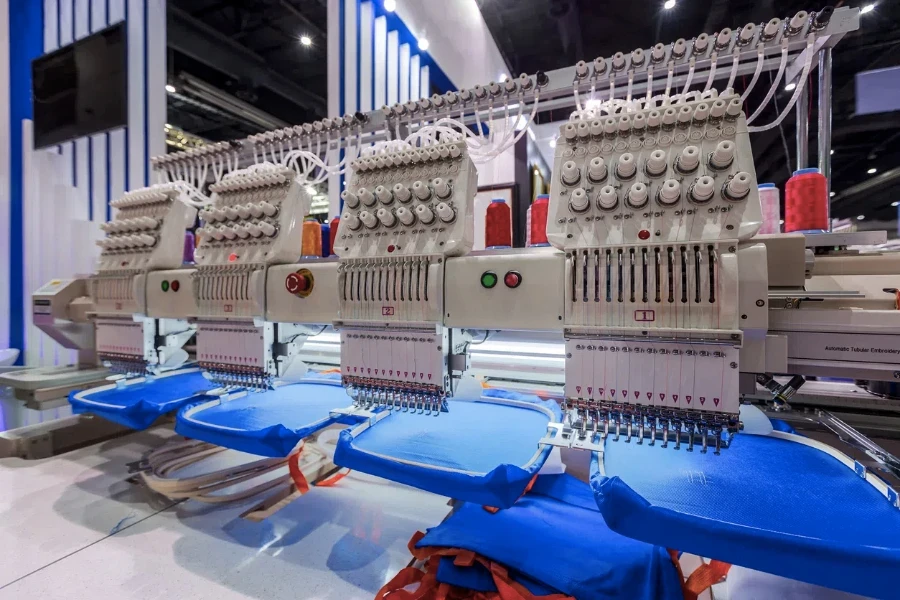
Making the final decision on machinery acquisition involves careful consideration of various factors, including durability, warranty, budget, and current trends. By evaluating these aspects, businesses can select the most suitable equipment to meet their operational needs and achieve long-term success.




